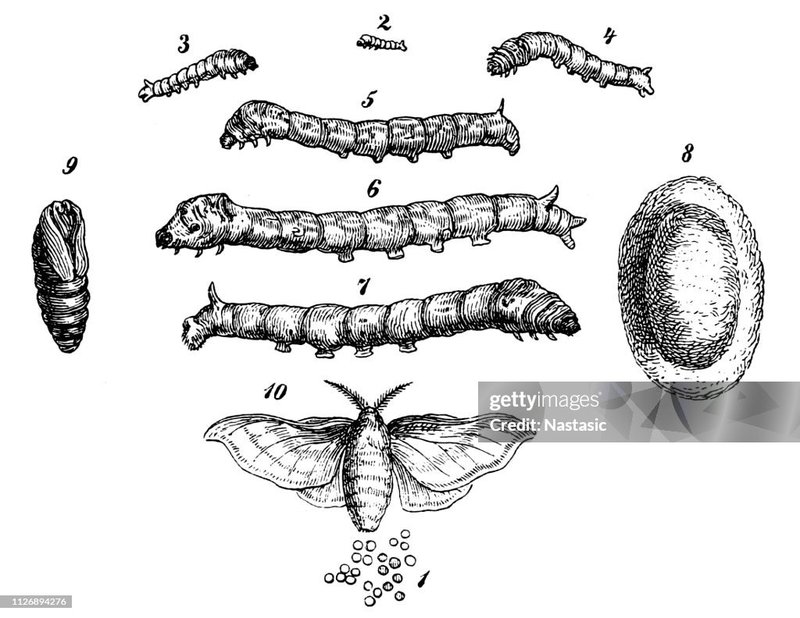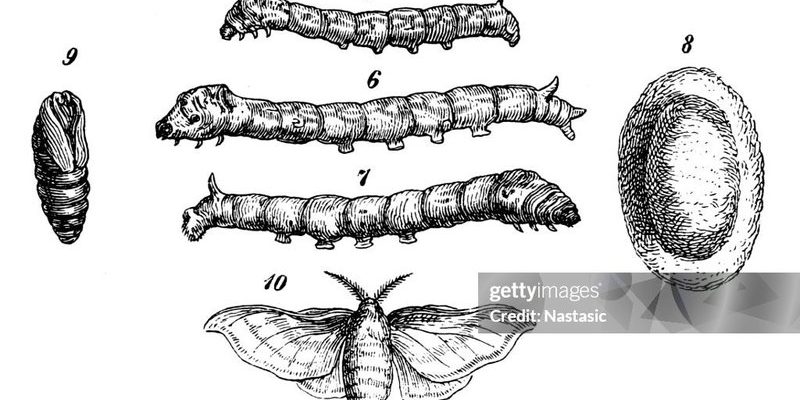
Imagine silkworms as tiny sleep experts. They go through various stages of rest, much like us, but with their own twists. Instead of counting sheep, they’re creating silk. So, let’s dive into the world of silkworm sleep, exploring what happens during these phases and why it’s essential for their growth and development.
The Life Cycle of Silkworms
Before we get into their sleep phases, let’s take a quick look at the life cycle of silkworms. Silkworms start their journey as eggs, which hatch into larvae, commonly known as caterpillars. This stage is crucial because it’s when they eat and grow, eventually leading to the cocoon stage. After they form their cocoons, they enter the pupal stage, transforming into moths. Each of these stages requires different amounts of rest, which sets the stage for understanding their sleep.
During the larval stage, silkworms are pretty much eating machines. They munch on mulberry leaves, growing rapidly. This phase is essential for their transformation, and they need to balance eating with periods of sleep. As they transition into spinning cocoons, their rest becomes vital for energy conservation. So, understanding how and when they sleep helps us see the bigger picture of their life cycle.
Understanding Silkworm Sleep Patterns
You might be wondering, “How do silkworms sleep, anyway?” Well, silkworm sleep can be broken down into several phases that reflect their biological clock. They experience a state of rest where their metabolism slows down, helping them conserve energy. This rest period is different from the deep sleep we humans experience.
During these rest phases, silkworms exhibit behaviors similar to sleep. For example, they often become less active, curl up, and their body movements slow down significantly. It’s like watching a tiny creature hit the snooze button. Interestingly, this sleep isn’t uniform. There are lighter and deeper stages, where the silkworm’s responsiveness to external stimuli changes.
The Different Sleep Phases of Silkworms
Just like us, silkworms have different phases of sleep. These can be categorized into light and deep sleep. **Light sleep** allows them to respond to their environment, while **deep sleep** is when their bodies are truly resting. Here are some crucial points about these phases:
- Light Sleep: Silkworms can still react to sound or movement during this phase. It’s like being in a half-awake state where they might jerk or twitch slightly.
- Deep Sleep: This is the time when silkworms gain the most benefits. Their heart rate slows down, and they’re less likely to respond to disturbances.
This two-tiered approach to sleep helps them balance the need for rest with the dangers of the outside world. They’re active and alert when necessary but get deep, restorative sleep when it’s safe.
The Role of Circadian Rhythms in Silkworm Sleep
Circadian rhythms play a big role in silkworm sleep patterns. These internal clocks help regulate their activities throughout the day and night. For silkworms, their sleep-wake cycle is influenced by light, temperature, and even humidity. When the light fades, silkworms become more inclined to rest.
During the day, silkworms are usually active, feeding and growing. As night falls, they enter their rest phases. This cycle keeps them in sync with their environment, ensuring that they get the right amount of sleep to support their growth and development.
It’s pretty amazing to think about how these tiny creatures have adapted their sleep patterns to their surroundings. Just like us, they need to make the most of their waking hours while ensuring they get enough restorative sleep.
Why Sleep Matters for Silkworms
You might be thinking, “Why is sleep so important for silkworms?” Well, here’s the thing: sleep is essential for their development. During those deep sleep phases, their bodies undergo important processes that help them grow and transition through their life stages. Proper rest allows silkworms to produce silk efficiently and prepare for their future as moths.
Without adequate sleep, silkworms can become stressed, leading to poor growth and even impacting their ability to spin silk. Think of it as a well-balanced diet—sleep is just as crucial for their development as the mulberry leaves they consume!
How Silkworm Sleep Compares to Other Insects
When we look at silkworms, it’s interesting to compare their sleep patterns to other insects. For instance, honeybees also exhibit sleep-like states, yet their sleep phases differ due to their social behavior and hive activities. Honeybees often take short naps throughout the day, while silkworms tend to have longer periods of deep sleep, especially at night.
Each insect species has adapted its sleep behaviors to meet its unique needs. Silkworms focus on energy conservation and growth, while honeybees balance rest with their roles in the hive. This variety in sleep behaviors highlights how different creatures have evolved to thrive in their environments.
Understanding silkworm sleep and rest phases isn’t just about the science behind it—it’s a window into the life of these fascinating creatures. Just like us, their sleep patterns play a crucial role in their development and well-being. When we learn about their unique sleep habits, we gain a greater appreciation for the complexity of nature and how each creature plays its part in the ecosystem.
So next time you think about silkworms, remember that they, too, have their own little slumber world. By understanding their sleep needs, we can help ensure their survival, whether in the wild or through silk production. After all, it’s not just about creating beautiful fabrics; it’s about respecting these tiny but mighty creatures and their journey through life.

